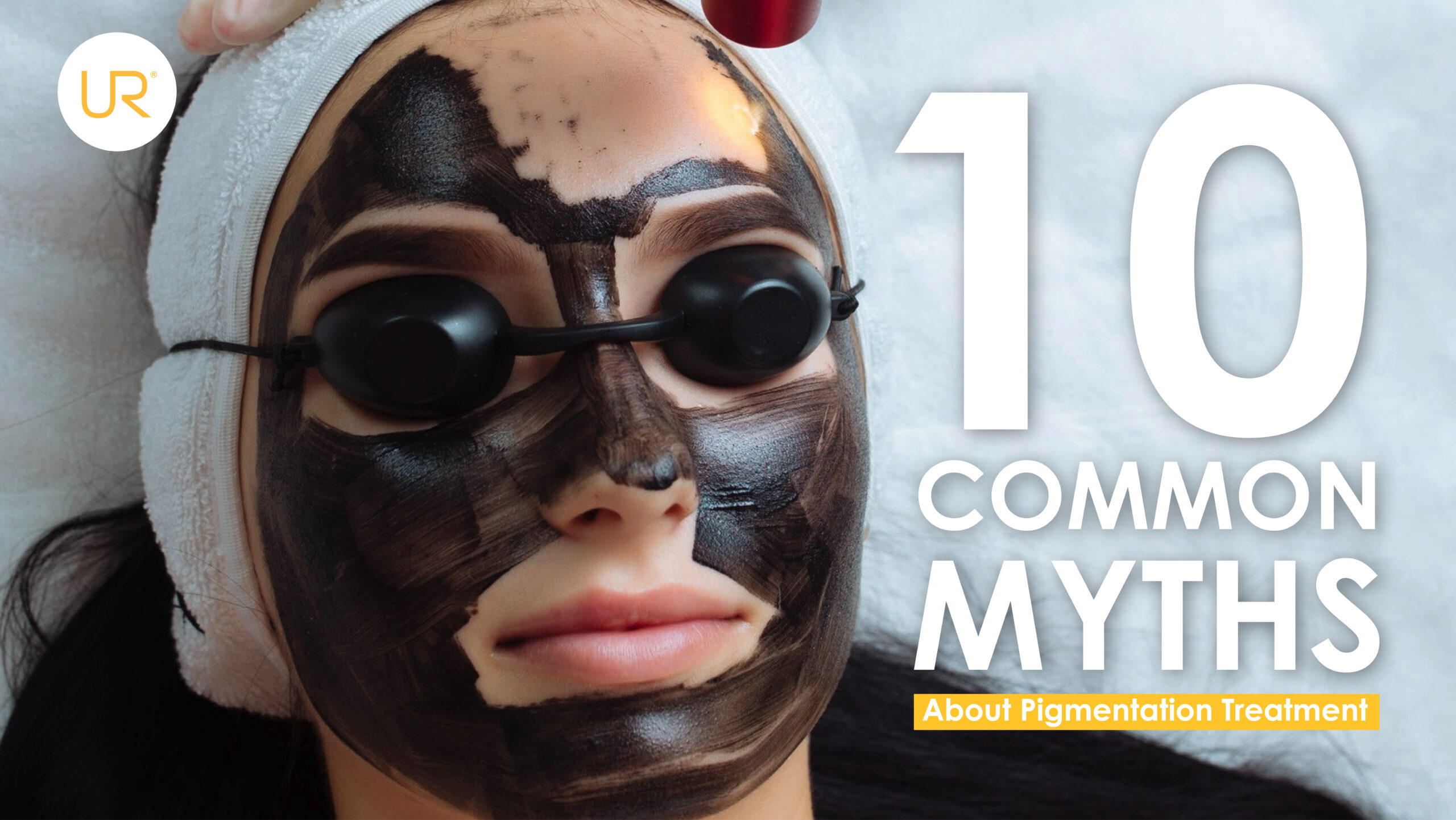
09 May Debunking 10 Common Myths About Pigmentation Treatment in Malaysia
Pigmentation issues like freckles, sunspots, melasma, ABNOM and post-inflammatory hyperpigmentation can be a source of frustration and self-consciousness for many people.
While pigmentation treatments like lasers, topical creams, and oral medication have become increasingly popular, there are still many myths and misconceptions surrounding these treatments.
In this article, we’ll debunk 10 common myths about pigmentation treatment.
Myth: Laser can cause skin thinning?
Truth: Lasers used for pigmentation treatments don’t cause skin thinning. In fact, they can potentially improve overall skin health and increase skin thickness. Non-ablative lasers are typically used for pigmentation treatment and work by using a specific wavelength of light that is only absorbed by the melanin in the skin, leaving the surrounding tissue unharmed. These lasers don’t affect skin thickness at all and can even stimulate collagen production, which can improve skin thickness, elasticity, and firmness.
Myth: Pigmentation treatment is a one-time solution
Truth: Pigmentation treatment requires a multidimensional approach and is not a one-time solution.
There are different types of pigmentation, and each type requires a different approach to treatment. Factors like age, severity of pigmentation, duration, skin condition, compliance with skincare, and underlying medical illness can all affect the treatment approach.
A personalized treatment plan that addresses the individual’s specific needs is essential. In-clinic treatments like lasers, at-home skincare routines, and sometimes even oral medication may be included in the treatment plan.
Myth: There is a permanent cure for pigmentation
Truth: There isn’t a permanent cure for pigmentation, but we can prevent new pigments from forming by addressing the underlying factors.
Pigmentation occurs due to the overproduction or uneven distribution of melanin in the skin, and it can be caused by things like too much sun, hormonal changes, genetics, some medications, and skin injuries or inflammation. When we treat pigmentation, we only remove the melanin in the skin and not the melanocytes because they’re important in protecting our skin from skin cancer. But if the underlying cause of pigmentation isn’t addressed, like if we keep getting too much sun or hormonal changes, new pigmentation can form.
Therefore, it’s essential to take preventive measures like applying sunscreen, making sure our skin is hydrated, avoiding certain hormonal medications, and more.
Myth: Laser that treat pigmentation can cause your skin to be more sensitive to sun
Truth: The lasers used for pigmentation treatment are designed to target the melanin in the skin without harming the surrounding tissue, so they won’t affect skin thickness or increase sensitivity.
However, people with pigmentation issues often have sensitive skin as well, which can cause constant inflammation and activate melanocytes, leading to more melanin production. That’s why it’s important to address any sensitive skin issues during pigmentation treatment by making sure the skin is properly hydrated, using sunscreen to protect it from further damage, reducing inflammation with 595nm wavelength gold light treatment, and avoiding any triggers that could make the condition worse.
Myth: Oral collagen helps in skin pigmentation
Truth: While collagen supplements may have some benefits for the skin, they won’t necessarily help with pigmentation treatment. Collagen is a protein that helps keep our skin looking firm and elastic, but as we age, our natural collagen production decreases. Pigmentation occurs due to the overproduction or uneven distribution of melanin in the skin, and collagen has no direct impact on melanin production.
Myth: Topical whitening cream can cause skin cancer
Truth: Some whitening agents like mercury and hydroquinone have been linked to skin cancer, but others like arbutin, Kojic acid, Licorice, and Vitamin C are generally safe to use and don’t cause skin cancer. It’s important to be aware of the ingredients in the skin care products you use and always choose a product with safe and effective whitening agents.
Myth: Only fair skin tones have pigmentation
Truth: All individuals are born with a similar amount of melanocytes, but the types of melanin they produce differ.
Fair-skinned individuals tend to have higher amounts of pheomelanin, which is lighter yellow or red, while darker-skinned individuals have higher amounts of eumelanin, which is brown or black. Therefore, it is incorrect to say that only fair skin tones have pigmentation.
Pigmentation issues such as freckles are commonly found in fairer skin types, whereas melasma is associated with medium skin tones of Fitzpatrick 3-4.
Myth: Cooking can cause pigmentation
Truth: While there isn’t any conclusive study that directly links cooking to pigmentation, being exposed to heat in the kitchen can cause skin inflammation and damage. This could potentially result in the overproduction of melanin and ultimately lead to pigmentation issues.
Myth: Exposure to phone/electronic devices can cause pigmentation
Truth: Visible light, specifically blue light, can contribute to skin aging. Blue light has been found to stimulate the production of melanin in the skin, which can cause pigmentation and accelerate aging. To protect your skin from blue light, it’s important to use sunscreen as usual, but you can also benefit from using skincare products that contain antioxidants like Niacinamide. These can help to provide additional protection against blue light and keep your skin healthy and youthful-looking.
Myth: Latest laser technology guarantees results
Truth: The outcome of pigmentation treatment depends on various factors such as getting to the correct diagnosis, using the appropriate power and settings of the laser, implementing a proper skin care routine, and avoiding any precipitating factors.
Therefore, it is crucial to consult a professional for proper guidance and to have a discussion about expectations and treatment approach. No one can guarantee a 100% result for pigmentation treatment, but with the right approach and the help of a professional, it is possible to achieve significant improvement.
In conclusion, understanding the truth behind these common myths can help individuals make informed decisions about pigmentation treatment. It’s essential to work with a qualified professional to create a personalized treatment plan that addresses the individual’s specific needs and to take preventive measures to avoid new pigmentation from forming. Taking care of our skin and addressing any underlying factors can help us achieve healthy, glowing skin.


